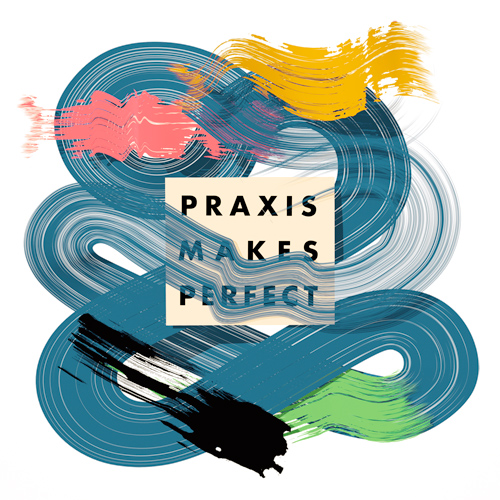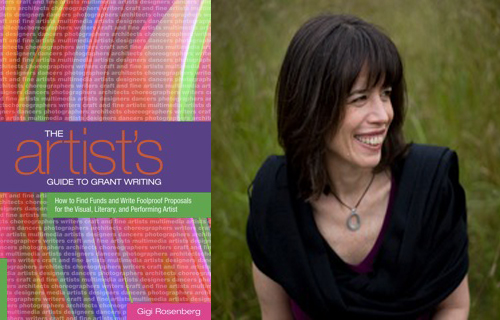F stands for Fre$h.
Beverly Fre$h, that is. Artist, performer, rap star, and former corporate graphic designer, Mr. Fre$h found his first flicker of fame when he was included in the 2009 Book of Guinness World Records. History was forged before my eyes at the Cranbrook Art Museum degree show in May of 2009 when Fre$h set three world records. A frenzied crowd focused on Fre$h’s face flecked with yellow yoke as he smashed forty-one eggs on his head in under a minute. He broke further records for the most chocolate candy Whoppers caught in his mouth from a distance of 6’6” (also in under a minute) and for the tallest stack of cassette tapes.
F for Fortune.
Fortune favored Fre$h in the months following his record-breaking feats when Fre$h went to Berlin–for free! Fre$h won a grant, namely, the Daimler AG Emerging Artist Grant. The award annually funds a one-month stay in Berlin for one Cranbrook graduate student who “exemplifies the spirit of DaimlerChrysler Services’ core values: integrity, openness and respect; social responsibility; inspiration and empowerment; and commitment to excellence.” A rapper might seem a far cry from the car company’s core values, but Fre$h attested his affinity for effectuating excellence as well. There is money—free money—that can and will befall even the most far-fetched of fantasists.
F for Fervor.
F is for fervor; F is not for fake. However tempted one may feel to feign enthusiasm when writing a grant proposal or pitching your part before a selection committee, most people can, in fact, spot a fake. Before a board of company officials, Fre$h delivered a fierce PowerPoint, outlining his development, influences and conceptual framework as an artist. He finished his presentation with a mouth-foaming performance of “O When the Dogs Bark.” The foundation for fruition, as Fre$h affirmed, is frankly, that you cannot fake the fervor.
F for Freaky.
I would qualify performing at a church made of human remains as freaky. Less freaky were the curators and art dealers Fre$h met while he was abroad. Sleeping in the parks, cars and parking lots of this foreign land, Fre$h befriended a few fascinating rappers from Turkey and Germany. Notably, he also performed at the famed Check Point Charlie in the Friedrichstadt neighborhood. With felicity Fre$h confided that he was confounded not to have found himself in jail.
F for Fun.
Fun is how Fre$h describes his new album “BED,” a limited edition vinyl 12” and digital EP. The album features favorites like “Half a Haircut” and the funky lyrics for which Fre$h is famous. There is plenty of fun to be found in Bed!
F for Follow-Up.
The following are author Gigi Rosenberg’s comments on grant writing and the application process. Rosenberg is the author of the book The Artist’s Guide to Grant Writing: How to Find Funds and Write Foolproof Proposals for the Visual, Literary, and Performing Artist, published by Watson-Guptill, a division of Random House, 2010.
Jacquelyn Gleisner: Firstly, what made you interested in the subject of grant writing for artists?
Gigi Rosenberg: I know grant writing seems very boring but I find “artists getting money” a very exciting topic! I had lost and won several grants over the years for my own work and then I was asked to sit on a panel judging other artist grants. That experience was such an eye opener. By sitting on the other side of the table, I realized that artists were making many big and small mistakes on their applications. I designed a workshop for artists on how to write kick-ass applications and the book was born out of those workshops.
JG: There are tons of grants out there for artists, but how do we find them?
GR: The first place to look is in your studio or at your writing desk – examining both your work and clarifying your goals for yourself as an artist. Look at your career and imagine where you want to be in 1, 5, 10, 20 years. Then think about what it’s going to take to transport you there. What kind of support – financial, logistical, psychological, practical, and on and on – are you going to need? That’s the place to start your research – with yourself and your work. Then you know if you’re looking for let’s say, a project grant or a residency, for example. You can find very useful and sortable databases for granting opportunities at the New York Foundation for the Arts and The Foundation Center. But you must know first what you’re looking for. If you look on the resources page on my website I list these links and more.
JG: Can you briefly describe the different types of grants?
GR: One type of grant is called a “professional development grant” which, as its name implies, is designed to help you enhance or further your career. It might pay for you to attend a workshop, hire a mentor, build a website, fly to Europe to attend a professional conference, for example. Another kind of grant is a “project grant” which is funding for a project that usually involves an audience – I know artists who’ve won these grants to pay for a performance installation, stage a public reading, or put on a play. These are just some examples. Check out the websites of some of the funding organizations – they will often list who they have funded and describe the projects – its very inspiring to read those lists.
JG: Many artists are intimidated by the grant-writing process. Should we be?
GR: Anything you don’t understand can feel intimidating. Also, the grant application process puts you in the position of having to ask for help — which nobody likes to do. It can even feel demeaning sometimes. That’s why I always teach my students to control everything they can control and let go of what they can’t control (like who’s on the review panel, for example) and make sure the application process helps further their career so they win even if you don’t win the funding.
JG: What are the best tips that you can give to young artists about crafting a winning grant proposal?
GR: Make sure you meet the criteria. Be the artist this organization is waiting for. Don’t be afraid to ask questions but make sure you’re not calling with a question the day before the application is due. Also, take advantage of any workshops the organization offer. If you can, always follow up to find out why you weren’t funded. This information can be a gold mine.
JG: Any pointers on becoming a better writer?
GR: As with anything, practice makes you better. Read good writing. Have writer-friends read your writing and give you honest, constructive feedback. Any kind of writing will help your writing: journal writing, poetry writing, etc. Take a writing class. Read a book about writing. Some good ones are: Strunk and White’s The Elements of Style, Annie Lamott’s Bird by Bird, and William Zinsser’s On Writing Well.
JG: Do you have any suggestions regarding the “work sample” for the grant application?
GR: Make sure your work sample shows your best work and that it is beautifully documented – meaning you’ve hired a professional photographer or have followed good photography basics. Give yourself time to pick the work and get help from an advisor. It’s sometimes difficult to be the best judge of which work samples to send. A trusted advisor can really help you choose the best work that is also the best fit for the opportunity.











Pingback: Praxis Makes Perfect | Draw the Devil from this Boy | Art21 Blog